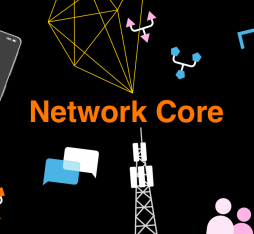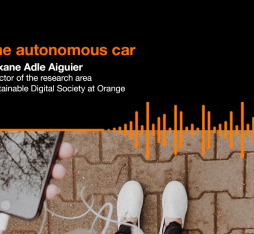Mari-Noëlle Jégo-Laveissière, Executive Vice President Innovation, Marketing & Technologies at Orange describes it in détail.
Orange is the leader for 4G and wants to maintain this position with 5G. Orange is thus striving everything to prepare this generation of network, carrier of promise for the future: 5G generation!
Today, 200 of Orange’s men and women are working on 5G, and the 20,000 staff working on mobile networks across the Group will be gradually brought on board.
We are currently looking into three complementary areas:
– Improved mobile broadband, with speeds up to 10 times quicker than 4G.
– As well as ultra-high-performance fixed internet access to supplement the fibre network wherever it is not available.
– Not to mention a range of new applications, to support the digital transformation for various business sectors.
Connectivity is the foundation for our innovations. That is why we will be actively preparing for the arrival of 5G.
5G with Orange will be a genuine “multi-service” network.
5G is designed to be a multi-service network, able to adapt to a very wide range of devices: smartphones of course, as well as augmented smartphones with augmented reality and 360° content, sensors, connected devices, fridges, driverless cars, and much more. Basically, it is 5G that will make it possible for connected cars or smart cities of the future to develop.
The cost-effective development of 5G on a large scale requires a global standard that will make it possible to ensure solutions are interoperable and sustainable. We are actively contributing to its standardisation and a first major milestone was successfully passed in December 2017 when a first version of the standard was published. Another essential element for its development: frequencies. Low frequencies, which will meet the requirements for coverage, particularly inside buildings, high frequencies, to deliver quicker speeds and accompany growth in uses, and very high frequencies, for very high-speed fixed broadband.
We are committed to a co-development approach with all the ecosystems: research, universities, various economic sectors (transport, industry, health, entertainment, etc.).
Together, I firmly believe that we will be able to better understand the challenges that lie ahead, the new business models involved and the requirements at stake, in addition to testing various use cases.
Of course, we are carrying out this work and assessing the performance of the various technologies under real conditions to gain the operational experience needed to create 5G networks.
We have already carried out several concrete tests on 5G and we are launching others.
We will be carrying out France’s first end-to-end 5G test in Lille and Douai between mid-2018 and mid-2019 as soon as ARCEP has given necessary authorizations. For these tests, we will be using Ericsson’s 5G equipment.
With Samsung and Cisco, we will also be carrying out a full-scale test in the second half of 2018 for very high-speed home internet access with 5G for Orange’s retail customers in Romania.
Transport of the future is a fascinating field and we are working in particular on vehicle connectivity. I am particularly proud that Orange is now the 4G/5G connectivity partner for UTAC CERAM, a global leader for the testing and approval of driverless vehicles.
5G will be rolled out gradually from 2020.
The first 5G smartphones are scheduled to arrive in 2019, which will enable us to launch some pilot cities. Then, deployments will move forward gradually from 2020 depending on the availability of frequencies and growth in use.
Orange is the leader for 4G and wants to maintain this position with 5G.
This next-generation connectivity will transform our practices and society in general, driving the emergence of a 5G Generation.











